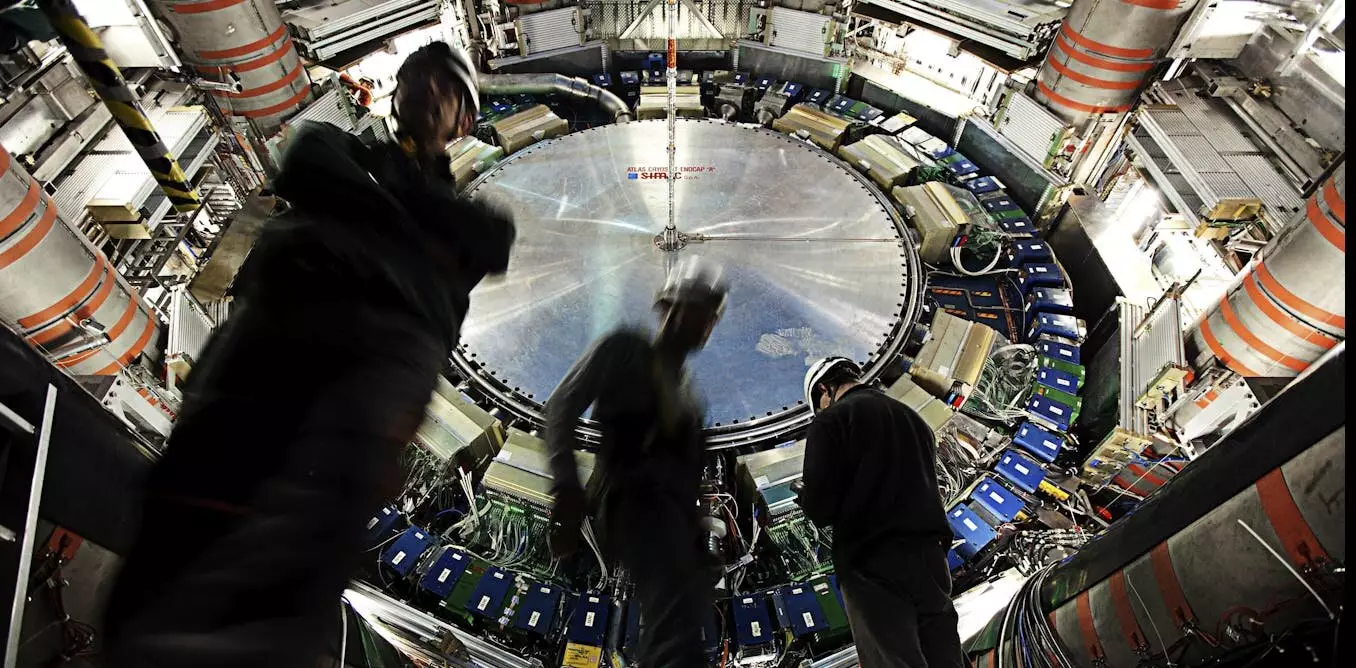Quantum entanglement challenges our intuitive understanding of the physical world. Traditionally, we perceive entities as either distinct or interconnected, a binary that does not hold true when we consider entangled particles. This peculiar phenomenon allows particles, regardless of the distance separating them, to possess a connection allowing for the measurement of one to instantaneously inform about the state of another. This phenomenon stands at the core of modern quantum mechanics and has now found a captivating new application: the entanglement of top quarks.
Entanglement was first illustrated in experimental settings involving photons in the 1980s. Scientists now possess the ability to generate pairs of entangled photons commercially, a significant advancement that underlines the potential of entanglement in emerging technologies. However, the recent findings at the Large Hadron Collider (LHC) in Geneva have catapulted this fascinating concept from low-energy systems to the realm of high-energy physics, where top quarks reign.
The Large Hadron Collider is the epicenter of contemporary particle physics research, and its ATLAS experiment recently demonstrated entanglement in top quarks—particles that are quintessential to understanding the fabric of matter. With a mass approximately 184 times greater than that of protons, top quarks present unique challenges and opportunities for physicists. Their substantial mass raises compelling questions about the fundamental forces governing the universe and hints at the existence of “new physics” beyond the Standard Model.
The significance of observing entanglement among these heavyweight particles cannot be overstated. Most previous demonstrations of entanglement involved low-energy systems, where conditions can be manipulated to minimize disturbances. However, capturing entanglement behaviors in robust and energetic systems like top quarks could usher in transformative insights into the fundamental workings of matter and forces.
Top quarks are not just another addition to the existing particle zoo; their discovery shifted the focus of particle physics significantly. First identified by Cornell University in the 1990s, their mass presents both a curiosity and potential clues about the universe’s unanswered questions. Researchers theorize that the top quark’s colossal mass may signify undiscovered forces or interactions at play, suggesting layers of complexity in the quantum landscape.
Studying top quarks thus offers a compelling avenue for probing deeper into the universe’s fabric. Experiments aim to pinpoint the reasons behind their extraordinary mass and how they interface with fundamental forces. Such explorations could ultimately have repercussions for the very understanding of the Standard Model of particle physics, highlighting the insufficiency of our current theories and opening doors to novel avenues of inquiry.
Despite its robustness in theory, entanglement itself is notoriously fragile in practice. Quantum states are delicate and can be easily disturbed by external interactions or environmental factors. Most quantum physics experiments are conducted at extremely low temperatures to minimize disturbances and preserve the fragile entangled states. The experimental conditions required to maintain entanglement add layers of difficulty when attempting to explore high-energy systems like top quarks.
Yet, the unique properties of top quarks position them as ideal candidates for studying entanglement despite their inherent challenges. The energy scales involved in the LHC experiments facilitate precise measurements, and while one may not envision carrying around a top quark for practical technological applications, the implications of understanding their behavior run deep.
The Future of Quantum Research
The recent discoveries made through the ATLAS experiment do not just represent a technical achievement; they shine a light on the broader potential of quantum research. By revealing the intricacies of entanglement in top quarks, physicists can dig deeper into the fundamental forces shaping the universe. While practical applications of this research (such as quantum computing) remain complex and distant, the knowledge gained from such experiments serves as a stepping stone toward innovative technologies.
While entanglement may seem like a concept best suited for science fiction narratives—evoking images of distant, intertwined realities—it is most certainly grounded in reality. The research surrounding top quarks and their entanglement paves the way for an enriching narrative in particle physics, with the promise of new discoveries waiting on the horizon. As we unravel the mysteries of these heavyweights, we come closer to understanding the very nature of reality itself.


Leave a Reply